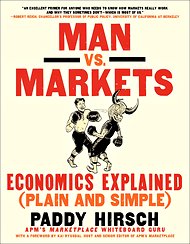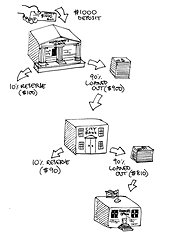CULVER CITY, Calif. — The weekend broadcasts of “All Things Considered” are heading West.
At an underutilized NPR office here, the famed afternoon program will reboot itself on Saturday with a new host, Arun Rath, a new time zone and even a rearrangement of its brassy theme music.
NPR officials have billed it as a rare chance for a legacy radio program, previously based in Washington with the rest of the public radio organization, to rethink what it is and does — and let listeners decide if the changes sound good.
The timing is somewhat awkward, since NPR is trying to balance its budget by cutting about 10 percent of its work force, initially through voluntary buyouts and, if necessary, through layoffs. The plan, announced last week, has been demoralizing for some employees — but the shows must go on, including “Weekend All Things Considered,” for which Mr. Rath was hired away from the PBS program “Frontline” in July.
For NPR, “All Things Considered” is one of its two flagships, the other being “Morning Edition.” NPR says about 12 million people hear at least a part of the weekday program on a typical week; 2 million hear the shorter weekend program.
Guy Raz was the host of the one-hour weekend edition until the end of last year, when he moved over to the “TED Radio Hour.” While Jacki Lyden and others filled in, NPR executives talked at length about how to adjust the show over the long term.
“Geographic diversity was very important to us,” said Ellen McDonnell, NPR’s executive editor of news programming. “Hurricane Sandy focused our attention on how we would broadcast if there was a situation where we were incapacitated at our Washington facility. Brainstorming began and after a few meetings we agreed that moving the show west was central to our editorial and future business continuity.”
These weren’t entirely new thoughts for NPR. The organization opened the cavernous facility it calls NPR West in 2002 and for a while originated two programs from here, including “Day to Day,” a well-regarded newsmagazine. But the programs were canceled amid a round of budget cutbacks in 2008 and 2009. NPR West has remained home to the organization’s Southern California bureau and to a number of “Morning Edition” staff members, including that program’s co-host, Renee Montagne, but the move of “Weekend All Things Considered” has brought more energy.
“It’s good to be out West,” said Mr. Rath, who has yet to unpack all the boxes in his new office.
“We’ll have more stories from the West; more voices from the West,” he said. “But the core values of the program aren’t going to change.”
Kevin Roderick, the founder and editor of L.A. Observed, which covers the city’s media and politics, said: “I’m always a little wary when a national news outlet says it’s going to flavor its usual fare with more L.A. or West Coast ‘perspective.’
“The results tend to be disappointing or at least underwhelming. But it’s good for NPR to strive for more outside-Washington sensibility, and the people involved understand the turf, so in that sense I think it’s a plus for the weekend show to be based here.”

Article source: http://www.nytimes.com/2013/09/21/business/media/at-npr-a-new-host-and-a-move-westward.html?partner=rss&emc=rss

